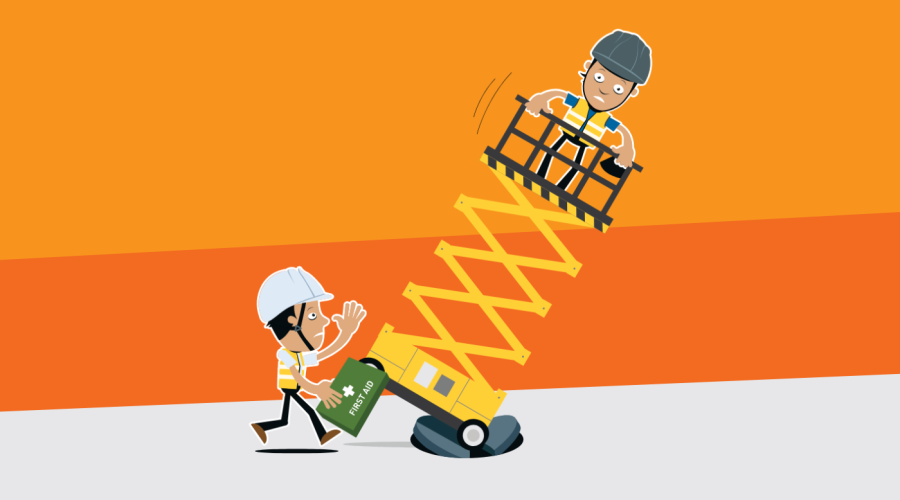Sustainability Tools

Sustainability at IPAF
In 2021, IPAF calculated its carbon footprint and planned for carbon offsetting projects for the next year. IPAF has achieved the carbon footprint standard and is now recognised as a CO2e Reduced Organisation.
year. IPAF has achieved the carbon footprint standard and is now recognised as a CO2e Reduced Organisation.
The resources listed and signposted to on this page are provided by IPAF to help members find support and information from third-party providers. Some companies have offered to provide discounts to IPAF members.
Carbon Footprint Ltd
For smaller companies: Carbon Footprint Ltd provides many resources free of charge to small businesses to help them measure their own carbon footprint.
Their online carbon footprint calculator tool is a good place to start. This allows members to capture and report on all your business operational emissions (building energy, travel, etc) at no cost. When you have completed your calculations, the website will then also offer options to offset the calculated emissions through a selection of various project schemes/portfolios.
If members would like to have their calculations verified independently by Carbon Footprint Limited, they are offering IPAF members a 10% discount off the Carbon Footprint Standard independent calculation.
For larger companies: Carbon Footprint Ltd can offer a detailed and comprehensive service for larger IPAF members including a verification service. IPAF members can receive a 10% discount on any consultancy service for larger companies from Carbon Footprint Ltd.
Small business carbon footprint calculator information on the verification standard
European Rental Association (ERA) Equipment CO2 Calculator
The European Rental Association (ERA) have created an Equipment CO2 Calculator, a free to use and independent tool for evaluating the carbon emissions of construction equipment.
The Calculator determines the carbon footprint of equipment over its entire lifecycle and is applicable to all types of equipment, from mini excavators and wheel loaders to generators, boom lifts and access platforms. It has six easy steps, requiring basic information about the characteristics and use of a piece of equipment – equipment production, transportation, lifetime and utilisation, energy consumption, maintenance and end-of-life – and the users are guided through the process step-by-step.
View the calculator
CLICK HERE FOR SUSTAINABILITY SUPPORT RESOURCES
Further resources grouped thematically are outlined below:
Calculate your carbon footprint
A common first step is to calculate the carbon footprint or greenhouse gas (GHG) emissions of your business.
There are lots of useful guides and explanations to help companies understand what a carbon footprint is, how should you measure, calculate and communicate it, as well as set targets to reduce it.
Guides
- A small business guide from the UK government
- Carbon Trust footprinting guide
- Zero Waste Scotland business guide
- FSB small business guide
Carbon Calculators
Carbon calculators are also available online. Some are free to use but if your company has more complex operations you may need to pay for support.
- Carbon Trust SME calculator
- Carbon Footprint business calculator
- Compare Your Footprint calculator
- BSI guide to product footprinting
Scope 1, 2 and 3 emissions
In looking at your carbon footprint, you’ll start to hear about Scope 1, 2 and 3 emissions.
The Greenhouse Gas Protocol is the world’s most widely used greenhouse gas accounting standard and flows through most carbon calculator tools which categorise your company’s emissions into these three different scopes.
Visit the greenhouse gas protocol
More concise descriptions are easy to find online:
- https://compareyourfootprint.com/difference-scope-1-2-3-emissions/
- https://www.anthesisgroup.com/scope-1-2-3-emissions/
- https://www2.deloitte.com/uk/en/focus/climate-change/zero-in-on-scope-1-2-and-3-emissions.html
Find energy saving products
The Energy Technology List (ETL) is a list created and updated monthly by the government’s Department for Business, Energy and Industrial Strategy (BEIS), which provides details of energy-saving products for businesses and the public sector. Since its inception, the scheme has assessed nearly 60,000 products and now features 56 technology categories. Use this list to find credible technologies and suppliers.
Switch to a renewable tariff
Many companies are switching to a renewable tariff to help reduce their emissions and support the development of renewable technologies. Before doing this it is worth reading a little more about green energy tariffs as they are not all the same.
- Forbes – Green Business Energy, all you need to know
- Centre for Sustainable Energy – Green electricity tariffs
- Energy Saving Trust – Switching your energy supplier
If you decide to switch there are plenty of services available to help you compare and move over to a green energy supplier.
Electrify your fleet
Whether you own or lease your vehicles, it may be worth looking at switching to electric at the next available opportunity. There is advice and support available to work out a programme of fleet upgrades, as well as some grants for charging infrastructure.
It may also be useful to identify if and where Clean Air Zones may affect your business travel. The UK government publish information on where you’ll find Clean Air Zones, how to check if you'll need to pay a charge and create a business account, and what support or exemptions are available.
Utility Companies
Many utility companies now offer guidance and support to business customers wanting to save energy and reduce their carbon footprint. It could be worth reaching out to your supplier or seeing what they have put online.
Carbon offsetting
Where companies are not able to eliminate their carbon footprint in the short term, this is where carbon markets come in. Carbon offsets can be purchased from projects that are reducing greenhouse gas emissions, but it is critical to verify offsets to ensure they come from a credible source.
Offset providers:

